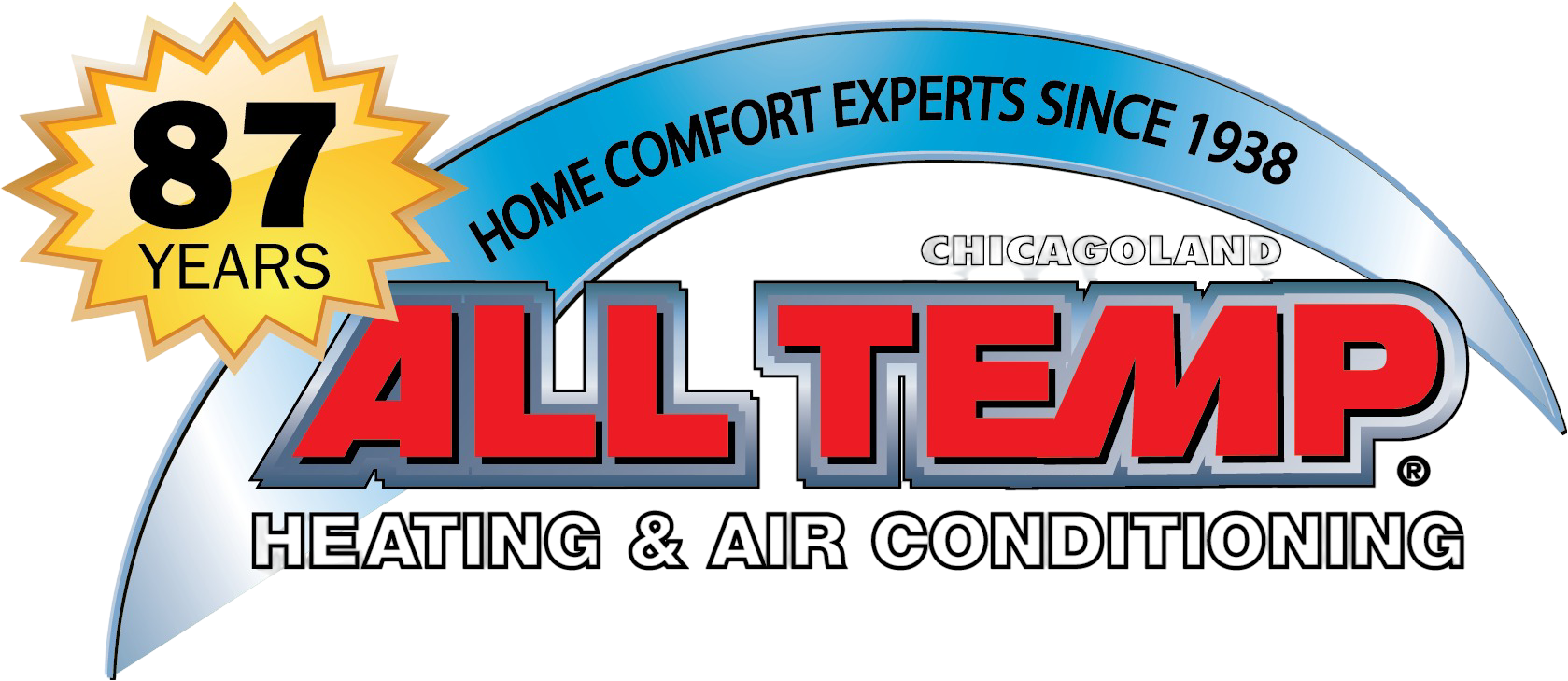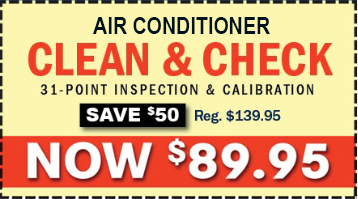COOLING
Q. The air is moving, but why isn’t the air cool?
A. There may be a few reasons. Your Freon or Puron may be low. It can be easily checked and fixed. There may be no power to the condenser. Breakers or fuses may be off. The thermostat is not turned to the cool setting. If so, the air conditioner will not work even though the blower will run. The thermostat setting is set as high or higher than the room temperature. If the room temperature is set at 68 and the thermostat is set at 70, the A/C unit stops cooling. The unit is iced up and air cannot flow through it. A clogged air filter or low coolant can cause this problem.
Q. It appears that my A/C unit is iced up.
A. This may be because you have dirty filters. Filters should be replaced or cleaned every month. Or the filter was removed or not installed properly. The system is low on coolant.
Q. My A/C unit is leaking.
A. Often your A/C will leak because of a clogged condensation drain. The condensation drain needs to be cleared. Sometimes this problem occurs when your unit becomes iced up, then thaws. If you are not sure of what you are doing, do not attempt to fix the problem yourself. High voltage and other dangers are present. Call All Temp for professional repair. We will not be responsible for accidents that may occur to do-it-yourself repairs.
Q. How do I know what size A/C unit I need?
A. It depends. Homes with poor insulation or many windows may require a higher capacity A/C system. New homes that are tight and well insulated may need less. Of course, many other factors may require a professional All Temp EEE check (Energy Efficiency Evaluation).
HEATING
Q. Suddenly the heat is not working.
A. Some common symptoms exhibited by the furnace may actually be due to a faulty thermostat. Thermostat problems can show up as a furnace that produces no heat, wild temperature swings or cycling on and off too often. Make sure the thermostat isn’t set too low, so it’s not calling for heat. Other problems may be: Circuit breaker or fuse controlling the furnace is tripped or blown. Natural gas or propane control valve is closed. Pilot light is out. Re-light. In all cases, if you cannot solve the problem, call an All Temp heating professional.
Q. The air coming from our vents is not warm.
A. The problem may be a dirty furnace air filter. Replace. Or gas burners may be dirty or need adjustment. Or your thermostat may be set too low so it is not triggering warmer air. Or your thermostat may be malfunctioning. Usually it is a simple solution. If you cannot rectify the situation, call 1-800-All-Temp.
Q. The pilot light is out, or goes out frequently.
A. Here’s what you should know: The burner in your gas furnace is ignited by electronic ignition as found in most modern furnaces or with a pilot flame common in older style furnaces. The gas furnace standing pilot (flame is lit all the time) is often referred to as a pilot light, but regardless what you call it, its main purpose is to serve as a small ignition flame for the gas burner. When this small flame fails to operate properly or goes out, it’s one of the most common reasons a gas furnace will fail to operate. Try re-lighting, but make sure you know what you are doing. The most common causes for the pilot light to go out are: a strong draft…dirty orifice…dirt in the gas tube. The thermocouple may also be faulty and is shutting off the gas supply. Turn to the professionals ate All Temp if you cannot fix the problem.
Q. How do I get my heating system ready for winter?
A. Always check out your furnace prior to the first cold night. Shut down your air conditioning. Now, make sure you clean or change your furnace filter monthly. If your furnace or boiler has a pilot light, make sure it is on. If your home has a fresh air intake, make sure you clean the outside lint trap. Set your furnace to the “heat” position and turn up the thermostat. Allow your furnace to run through a couple of cycles to make sure it is working properly. Inspect the furnace area. Make sure there are no items that could possibly interfere with air flow or combustion. All Temp’s maintenance agreement includes these services and others, so you never need to be concerned. We’ll make sure your furnace is winter-ready.
Q. Is regular maintenance important?
A. Yes. Your heating and A/C system will not operate to its potential (or at all) if a component is not working in harmony with the system. Seasonal maintenance and inspections are critical, because they identify problems, even dangerous conditions.
Q. What is AFUE?
A. AFUE stands for “Annual Fuel Utilization Efficiency.” A rating is assigned to every furnace using a formula based upon fuel use, electricity use, and the fans used in the furnace. The higher the rating, the more energy efficiency and savings on energy bills.
Q. What causes certain cracks to form in a furnace’s heat exchanger?
A. Repeated heating and cooling causes expansion and contraction of the metal. Cracks may form in the weaker areas of the heat exchanger.
Q. How often should I change my filter?
A. Disposable filters should be changed monthly. Filters are made with different efficiencies and thickness. A better filter simply works better.
Q. Should I lower my thermostat during the day to save on my electric bill?
A. This is not wise. The energy that it takes for your system to “rebound” outweighs any savings. The best advice: a programmable thermostat!
Q. How do I determine the correct size of HVAC equipment?
A. Every 550-600 sq. ft. of living space requires approximately one ton of cooling. A 2400 SF home @ 600 square feet per ton would need a 4 ton system. Of course, many other factors may require a professional All Temp EEE check (Energy Efficiency Evaluation.)
Q. Should I leave my fan in the “on” position or “automatic” position?
A. Depending on the humidity levels in your home, leaving your fan in the “on” position can be a way to constantly circulate air throughout the home and increase comfort levels, constantly cleaning your air.
Q. Why isn’t the humidifier working? It’s too dry in here.
A. These are common complaints during the winter months. Usually you can solve the problem without calling for service. In fact, many times the problem is caused by something the homeowner did, like turning off the humidifier at the end of last heating season and forgetting to turn it back on again. Or forgetting to open a damper or open a water valve. Remember that humidifiers need to be cleaned frequently. If the water panel or pad is clogged, the unit will not humidify properly. Here are possible simple problem/solutions you can try yourself. Humidistat not turned up high enough. Turn it up. Make sure the water valve is open. Make sure the bypass damper is open. Make sure your 115 volt unit is plugged in. Clean or replace the clogged water panel or pad. The Water level too low. If these are not the problems or solutions you may have a faulty solenoid valve, motor, humidistat, or shorted wiring. For these issues, call All Temp.



















